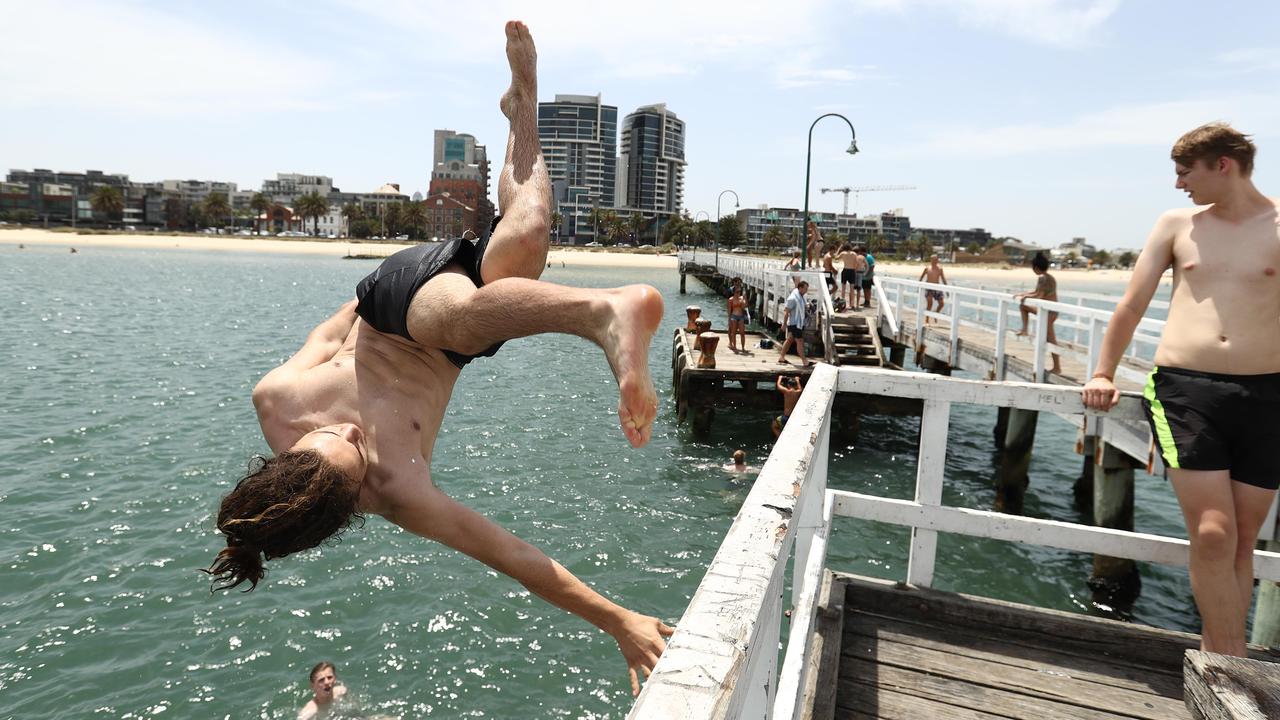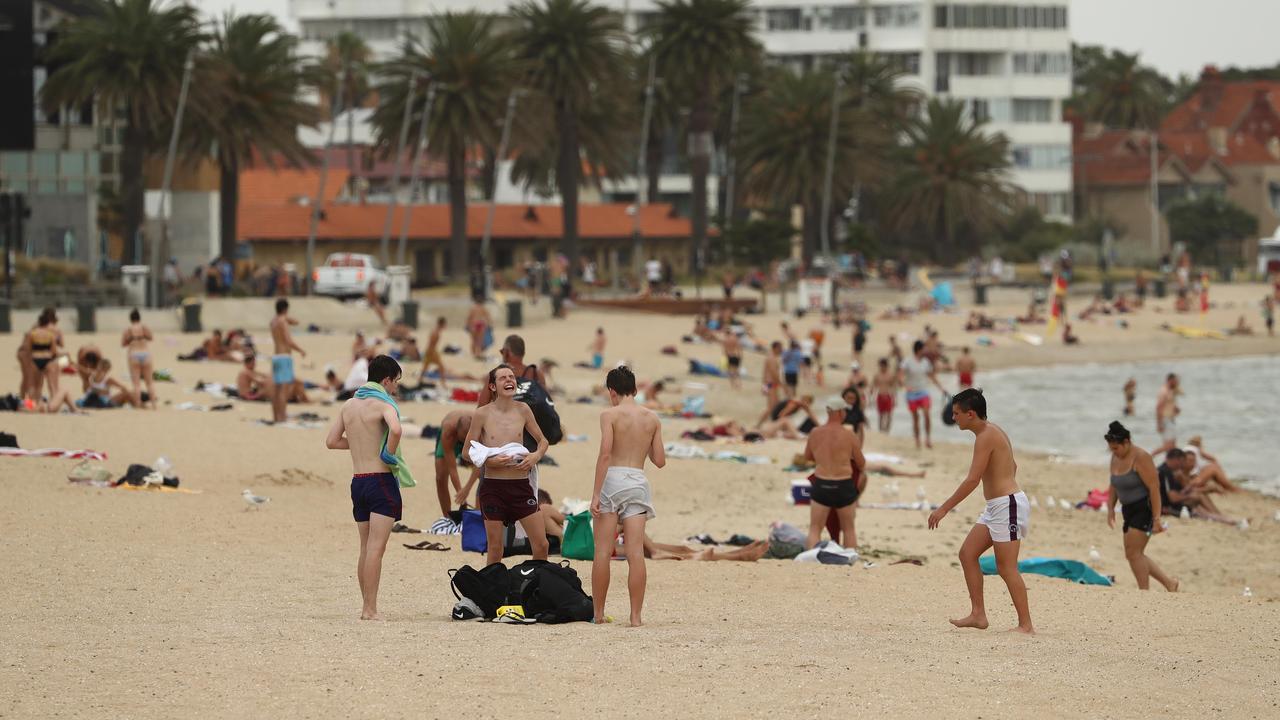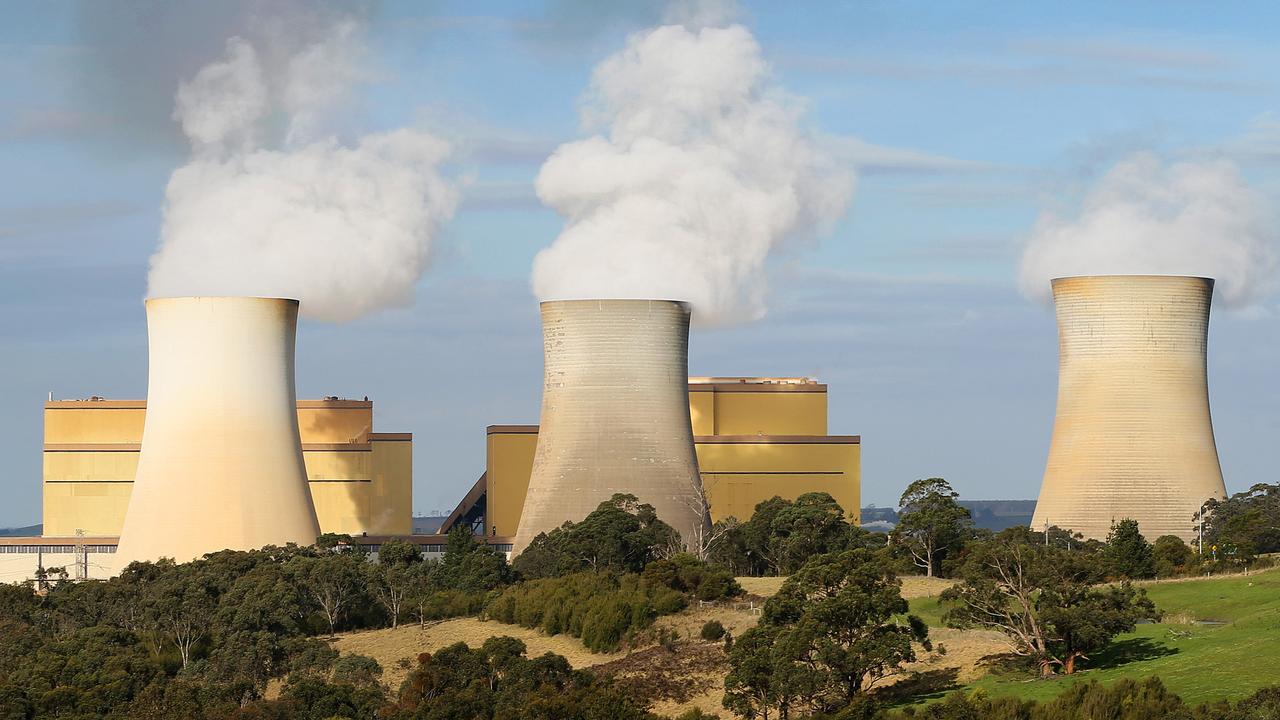Power outage in Melbourne as electricity generators fail and Victorians brace for hottest day since Black Saturday
More than 200,000 households lost power in Victoria today after temperatures soared above 40C and power generators failed.
More than 200,000 properties lost power in Victoria today because of load shedding due to hot weather.
The Australian Energy Market Operator (AEMO) confirmed that during peak demand they needed to find 250MW of energy and this was done by shutting off power to about 60,000 to 100,000 customers at any one time, on rotation.
The blackouts went from about 12pm to 3pm and were necessary to “protect the power system during record-breaking high temperatures, high demand and reduced generation availability”, a statement said.
AEMO said some residents and businesses may still not have power due to unrelated faults on the network.
“We encourage consumers to monitor their local distribution network’s outage maps via mobile devices or online,” it said.
“AEMO acknowledges the inconvenience and hardship of losing power supply during extreme conditions, and thanks all Victorians for their patience.
“AEMO would also like to recognise the contribution made by Victorian consumers and businesses who have purposefully conserved their energy use over the past 48 hours.”
During the blackouts, about 100 traffic lights were not working Melbourne and Geelong.


A spokesman for VicRoads confirmed to news.com.au that about 100 traffic lights in Melbourne and Geelong were not operating because of power supply issues.
“We’re working with the power companies as to when we can get power supply back in those areas,” he said. “Some come back on but then go out in other areas.”
He said police were at some intersections and other traffic management had been deployed.
“Motorists should take care and use common sense. They should give way as they would at an intersection with a Stop sign or a Give Way sign.”
A cool change brought relief to Melbourne residents about 2.30pm when temperatures dropped to about 27C in the city.
“It dropped about 15 degrees in the space of 15 minutes,” Bureau of Meteorology duty forecaster Chris Godfred told news.com.au.
Traffic lights down on the Nepean Highway at Elwood. Not at all envious of the police directing traffic in 42+ degrees. @abcmelbourne pic.twitter.com/13166iwg9i
— Zalika Rizmal (@Zalika_R) January 25, 2019


However, the cooler temperatures took longer to reach those in the outer suburbs.
Mr Godfred said the temperature in the city peaked about 42.8C, which was just short of the highest temperature for January of 45.6C and also short of the overall record of 46.4C recorded on Black Saturday.
Other areas did break temperature records including Sale in the Gippsland region, which reached 45.1, higher than the previous record of 44.6 set in 1982.
BLACKOUT AS HEAT RISES
Many households had to deal with the heat while not having power.
Australian Energy Market Operator (AEMO) ordered load shedding to begin about 12pm and it said power interruptions could last up to two hours.
“AEMO has instructed load shedding of approximately 200 megawatts (MW) and as a result, approximately 60,000 Victorian customers are expected to be affected by power outages as a result of electricity supply disruptions,” a statement said.
Regions to be impacted included parts of Epping, Mill Park, Lysterfield, Rowville, Clyde, Cranbourne East; Southbank, Armadale, Toorak, Camberwell, Fairfield, Northcote, Caulfield, Elwood, Beaumaris, Bulleen, Burwood, Riversdale, Bentleigh, Heathdale, Balaclava, Malvern, Balwyn, Surrey Hills, Essendon, Essendon North, Strathmore, Glenroy, Oak Park, Kalkallo, Broadmeadows, West Footscray, Fairfield, Ivanhoe, Alphington, Airport West, East Keilor, Niddrie, Ascot Vale, and Moonee Pond, Camperdown, Weerite, Yarrawonga, Bundalong, Castlemaine Muckleford, Lara, Corio, Norlan, Herne Hill, Hamplyn Heights, Balmoral, Haven, Woolsthorpe, Grassmere and Mailers Flat.
In a tweet AEMO said: “As a result of Victoria’s high temperatures, high demand and reduced generation availability, loss of electricity load to regions of the state has been required to ensure power system security. Please stay safe and we will provide a further update shortly.”
Power outage update: Jemena has been instructed by @AEMO_Media to shed customer load to ensure broader stability of the Vic electricity system. Impacted suburbs include: Glenroy, Oak Park, Broadmeadows, Essendon, Strathmore, and Kalkallo. We will keep you updated as we know more.
— Jemena (@JemenaLtd) January 25, 2019
Confirmed no power in ormond or Carnegie
— Carol Mau (@carolpoole) January 25, 2019
Earlier State Energy Minister Lily D’Ambrosio asserted the state would not have blackouts because of a strain on the energy system after a third coal-fired unit faulted overnight.
“Blackouts are something that absolutely will not be a feature of today or a possibility,” she said.
POWER GENERATORS FAIL
A third electricity generator in Victoria was shut down overnight as people suffered through sweltering temperatures, ahead of an expected 44C day.
About 6500 properties lost power on Thursday evening as the mercury struggled to dip below 30C.
Victorian Energy Minister Lily D’Ambrosio told 3AW this morning that three units at the coal-fire power stations Yallourn and Loy Yang A were not working.
“This means we can’t rule out brownouts,” Ms D’Ambrosio said. “We have ageing coal-fired power stations. They are becoming less reliable.”
A spokesman for EnergyAustralia told news.com.au that one unit at Yallourn, located in Latrobe Valley, came offline this morning after leaks were found in one or more boiler tubes.
“These tubes are required in the production of steam, which drives the turbine,” he said.
The issue was first noticed about midday Wednesday but the station decided to keep the unit running in a “controlled and reduced capacity” to help meet electricity demand during yesterday’s hot weather.
“Our ability to safely operate this unit was essential yesterday and helped ensure Victorians remained with power,” he said.
“Following this peak period on Thursday, we were forced take it offline because the condition of the tube leak deteriorated.
“We will be assessing the unit throughout the day. At this stage it’s unclear when it can return to service.”
Another unit was also down for scheduled maintenance so the power station is currently only operating at 50 per cent capacity.
A third unit at neighbouring Loy Yang A reportedly went down on Tuesday due to a tube leak with repairs expected to take about three days.
United Energy, Powercor and CitiPower spokeswoman Emma Tyner told ABC radio 6500 customers were affected by electricity outages overnight. The number had reduced to about 800 by 9am, mostly in the Powercor network, she said.

The Bureau of Meteorology has revised its Melbourne forecast to 44C for Friday — the hottest maximum temperature since it hit 46.4C on Black Saturday in 2009.
The temperature in Mildura in the state’s northwest was already at 37C at 8.50am today.
The power outages will likely feed into the energy debate, after previous problems in South Australia were blamed on the state’s high proportion of renewables.
Prime Minister Scott Morrison has said he wants to focus on “fair dinkum power”, defined as reliable power that functions when the sun isn’t shining and the wind isn’t blowing.
Yallourn power station running at 50% capacity due to an unknown fault in one of the 3 working generators. We are screwed today.
— Alice Noble (Tanner) (@Ally_Tanner) January 24, 2019
Yet another coal unit has failed at Yallourn Power Station... total 4 coal burners now inoperable across the #nem on one of Australia’s hottest days of the year #fairdinkumpower pic.twitter.com/2ErtntEwaA
— Daniel Kirkwood (@danielkirkwood) January 24, 2019
EVERY AIRCON in Melbourne will be running today.
— Hot Cross Matt (@DoctorIMatt) January 24, 2019
EVERY CHANCE power suppliers will have to “load shed†by cutting power to areas temporarily to balance supply & demand of power
Now that the sun is shining and it’s the conventional power stations that are struggling, the debate is sure to hot up again.
There are mounting concerns about the ability of coal stations to cope with heatwave conditions.
Those on social media were already commenting “we are screwed today” as news of the power station failures spread.
A very hot day today in #Melbourne with possible failures of power and transport systems - raises an interesting research issue - the impact of extreme weather upon #Australia #critical #infrastructure #cybersecurity
— Prof Matt Warren (@matt_warren__) January 24, 2019
Yesterday, Ms D’Ambrosio had urged households to ration their non-essential electricity use.
While “absolutely confident” there was enough energy supply to get through the night, she suggested turning off dishwashers, kitchen appliances, washing machines and pool pumps.
“What we are asking Victorians to do is just be aware and be mindful that the activities we undertake when we’re home do put that further pressure on our energy system,” she said.
Authorities are urging people not to take risks during the hot weather, including leaving children in cars or swimming at unpatrolled beaches.
The cool change was expected about 3pm, with a temperature drop of 15C in just 20 minutes forecast for Melbourne. The sharp change will bring gusts of up to 80km/h, thunderstorms and increased fire risk.
The extreme weather has also impacted other parts of Australia.
On Thursday, Adelaide CBD recorded the highest capital city temperature in the world when it reached 46.6C at 3.36pm, also breaking an 80-year record for the city’s highest temperature of 46.1C set in January 1939.
But the mercury rose even higher across the state, with Port Augusta the hottest at 49.5C and the fourth hottest temperature ever recorded in South Australia.
The town was one of more than 20 locations to experience record-breaking highs, others including Ceduna at 48.6C, Port Pirie and Whaylla at 48.5C.
South Australians will get some relief in the form of a cool change on Friday, when a maximum of 31C is forecast for Adelaide.
— With AAP
Continue the conversation @charischang2 | charis.chang@news.com.au




